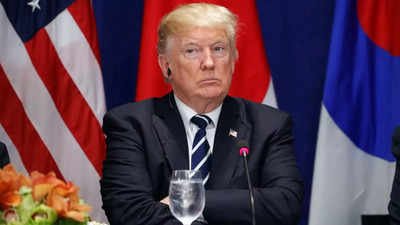As Donald Trump begins his second term as president, the US faces a debt crisis of historic proportions. with National Debt Now it’s $36 trillion, experts warn Debt-to-GDP ratio May soon cross 200%, putting a huge strain on the economy.
Unprecedented debt levels
America’s debt has grown at an alarming rate. From $5.7 trillion at the start of the century to $23.2 trillion by 2020, the jump has been exacerbated by the Covid-19 pandemic, which has added $16 trillion in just a few years. Over the past 316 days, the debt has grown by $6.3 billion per day, meaning that each American now effectively owes $108,000.
Currently, the national debt is 125% of GDP, but projections suggest that it could reach 200% in the coming years. Such a ratio would mean that the debt exceeds the size of the entire US economy, forcing the government to allocate more funds to servicing this debt than to critical sectors such as infrastructure, education and healthcare.
Rising costs of debt servicing
As the debt mounts, the US government is spending more than $1 billion a day on interest payments alone. This year, debt service is expected to exceed $1 trillion—more than is allocated for national defense. Rising Interest rates It will compound the problem by increasing borrowing costs for both the government and ordinary citizens.
Shai Akabas of the Bipartisan Policy Center explained: “Current levels of debt are driving up interest rates, including mortgages, and raising the cost of living for families. This will get wet economic growth and reduces opportunities for future generations.”
Trump’s strategy to tackle the debt
President Trump has responded by establishing the Department of Government Efficiency, led by Elon Musk and Vivek Ramaswamy, to streamline spending and reduce waste. Musk hopes to save billions through cuts, including cuts to public broadcasting budgets and financial aid for advocacy groups.
However, Trump’s proposed tax cuts, including lowering corporate tax rates to 15%, have drawn criticism. Economists argue that these measures could worsen the deficit by favoring the wealthy while reducing government revenue. Jessica Fulton of the Joint Center for Political and Economic Studies noted: “Further tax cuts for high-income groups will increase the deficit at a time when fiscal discipline is urgently needed.”
Economic Growth or Fiscal Crisis?
Higher interest rates are already straining American households, with yields on 10-year Treasury notes rising from 0.6% to 4.4% in 2020. This means higher borrowing costs for businesses and individuals, further slowing economic growth.
Brian Riddle of the Manhattan Institute criticized the administration’s approach: “Reintroducing tax cuts when the deficit has tripled is fiscally irresponsible.” Many Republican lawmakers are now questioning the viability of Trump’s fiscal agenda given the economic constraints.
Balancing debt and policy ambitions
Trump’s second term presents a delicate challenge: reducing the national debt while implementing his policies, including tax cuts and tariffs. Rising debt servicing costs leave little room for investment in areas such as infrastructure or national security.
To offset the costs, proposals to cut funding for environmental programs and rollback parts of the inflation-reduction law are under consideration, although such measures may face legislative and political hurdles.
Political implications and future outlook
As the debt crisis deepens, political tensions between Democrats and Republicans are expected to rise. Trump’s approach to handling the debt will influence not only his presidency but also the economic trajectory of America for years to come.
Despite the challenges, Trump’s team is optimistic. Transition spokeswoman Carolyn Levitt said: “The American people have ordered President Trump to deliver on his promises, including spending cuts. It will deliver. “
With the issue of the US debt at the forefront of the national debate, the stakes for Trump’s second term could not be higher. Decisions taken now will determine the country’s economic stability and global standing for decades to come.

